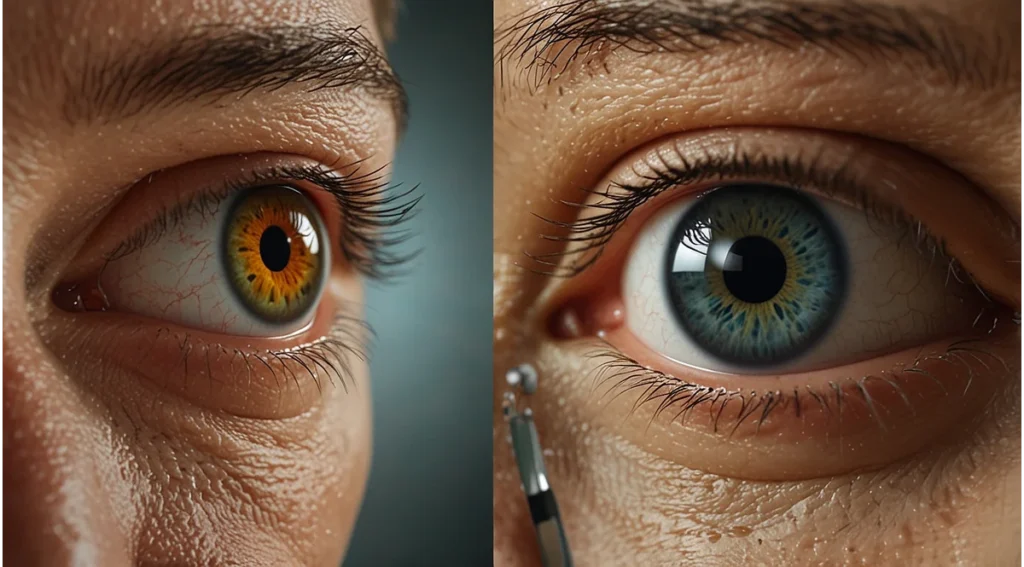Cataracts are one of the most common eye conditions worldwide, especially among older adults. They occur when the natural lens of the eye becomes cloudy, leading to blurry or decreased vision. While cataracts may sound alarming, they are treatable — and in most cases, vision can be fully restored with proper management.
👁️ What is a Cataract?
A cataract is the clouding of the eye’s natural lens, which lies behind the iris and pupil. This clouding prevents light from passing clearly through the lens, leading to a loss of vision clarity. Cataracts usually develop slowly and painlessly over time, making them harder to detect in the early stages.
🔍 Causes of Cataracts
Several factors can contribute to the formation of cataracts:
- Aging (most common cause)
- Genetics (family history of cataracts)
- Diabetes or other chronic illnesses
- Prolonged exposure to UV sunlight
- Smoking and alcohol use
- Eye injuries or inflammation
- Use of corticosteroids (long-term)
- Past eye surgeries
Even infants can be born with cataracts — this is known as congenital cataract.
🛑 Symptoms of Cataracts
Cataracts can cause a variety of vision-related problems, including:
- Blurry or cloudy vision
- Difficulty seeing at night
- Sensitivity to light and glare
- Seeing “halos” around lights
- Fading or yellowing of colors
- Double vision in one eye
- Frequent changes in glasses prescription
These symptoms may be mild at first but gradually worsen as the cataract progresses.
🧪 How Cataracts Are Diagnosed
Eye specialists can diagnose cataracts through:
- Visual acuity test (to check how clearly you see)
- Slit-lamp examination (to look inside the eye)
- Retinal exam after dilating your pupil
- Tonometry (to check eye pressure, though not specific to cataracts)
🧬 Types of Cataracts
There are several types of cataracts based on their location in the lens:
| Type | Description |
|---|---|
| Nuclear cataract | Forms in the center (nucleus) of the lens; common with aging. |
| Cortical cataract | Affects the edges (cortex) of the lens; appears like white wedges. |
| Posterior subcapsular | Develops at the back of the lens; often faster progressing. |
| Congenital cataract | Present at birth or forms during infancy. |
🏥 Treatment Options
In the early stages, changing your glasses or improving lighting may help. However, once cataracts begin to interfere with daily life, surgery is the only effective treatment.
👨⚕️ Cataract Surgery
Cataract surgery is a safe and common outpatient procedure where the cloudy lens is removed and replaced with an artificial intraocular lens (IOL).
- Takes about 15–30 minutes
- Done under local anesthesia
- No hospital stay required
- Vision improves within days
💡 Tips for Prevention and Eye Health
Although cataracts cannot always be prevented, the following tips can help lower your risk:
- Wear UV-protective sunglasses
- Eat a healthy, antioxidant-rich diet (leafy greens, carrots, etc.)
- Control blood sugar if diabetic
- Avoid smoking and excessive alcohol
- Get regular eye check-ups, especially after age 40
❓ Frequently Asked Questions
🔹 Is cataract surgery painful?
No. It’s usually painless and performed under local anesthesia. Mild discomfort may occur post-operatively but resolves quickly.
🔹 How long is the recovery?
Most people recover within 2–4 weeks. Vision often improves within a few days.
🔹 Can cataracts come back after surgery?
No. Once the lens is removed, cataracts cannot return. However, a posterior capsule opacity (PCO) may form later, which can be treated with a laser.
🧠 Conclusion
Cataracts are a common but manageable eye condition. Early diagnosis and appropriate treatment — especially surgery when needed — can restore clear vision and improve quality of life. If you or a loved one are experiencing symptoms of cataracts, schedule an eye exam with a qualified ophthalmologist.

